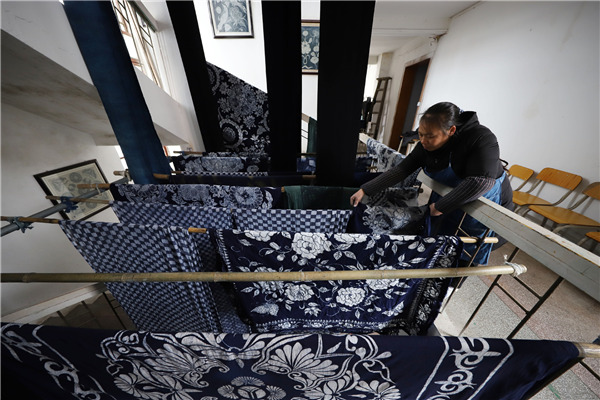Ethnic culture popularity grows on Chinese herb leaves


The leaves of a traditional Chinese herb have become an inseparable ingredient of a promotional campaign for the distinctive ethnic culture in Southwest China's Guizhou province.
Zhang Yiqiong's studio is full of indigo linen fabrics waving in the wind. The cloth materials are wax dyed with the help of the leaves of rhizoma et radix baphicacanthis cusiae, the Chinese herb believed to have the effect of driving away epidemics and killing insects.
"The root of the herb has a medicinal effect, and its leaves can be transformed into pigment for dark blue dyeing, which is perfect for the clothes of the Miao people," Zhang said.
Zhang is a member of the Miao ethnic minority in the ethnic county of Sandu. Locals traditionally wear dark blue ethnic clothes featuring pictures with Miao elements.
Zhang's company, Gen Lan Mu Tu, or "Miao wax dyeing" in the Miao language, specializes in wax dyeing for the Miao ethnic clothes. It has become a conglomerate, engaging in businesses such as rhizoma et radix baphicacanthis cusiae plantation, ethnic clothes making, wax dyeing and the Miao embroidering.
The company's businesses have generated many jobs for the local people, and helped lift more than 2,800 farmers out of poverty.
"The pigment we extract from the leaves can be applied in wax dyeing, and if we have extra pigment, we sell it to textile companies," Zhang said.




































